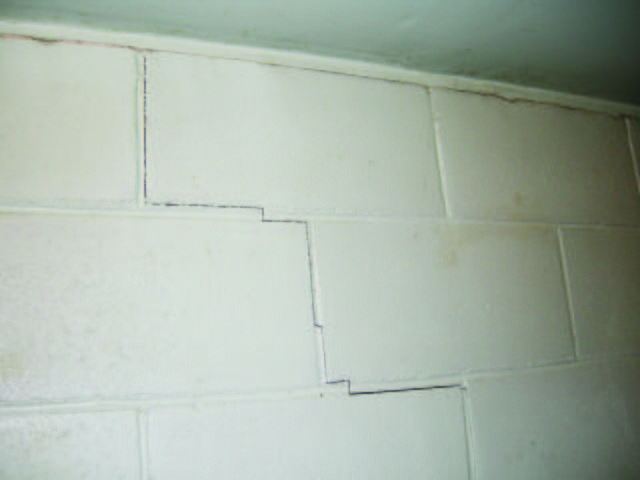Why We Shouldn’t Paint Brick or Block Walls
As one of the oldest building materials humans have used for centuries, there are many different kinds of bricks/ blocks. However, most ‘classic’ brick types we see on buildings and commercial facilities today share a similar manufacturing process, which includes:
- Crushing/ Grinding of raw clay material and other granular aggregate
- Adding Water
- Formed by Extrusion, Molded, or Pressed
- Drying/ Firing
Bricks and Blocks are Made to be Porous
Except for contemporary products, the traditional brick/ block manufacturing process ensures the blocks are porous. They’re designed to absorb and release water. That can become a problem over time if your walls haven’t been properly maintained throughout history (most buildings have not). And that’s the first reason you don’t want to paint over your brick/ block walls.
Bricks/blocks are built with clay, sand, water, and heat. Anything made of sand and clay, we already know to be brittle. Next, understand that bricks are porous (strong in structure but not physically solid). Water has no choice but to move through them. Water can come from anywhere, including INSIDE your building. By attempting to waterproof the outside of your wall, you effectively trap moisture inside the structure.
Historically speaking, the older your brick/block, the more likely it is to have deteriorated through natural expansion and contraction with the seasons. Think of it like this. Moisture enters your walls throughout the seasons. Over time, some moisture gets trapped inside the pores, freezes, and expands. This puts pressure on the hardened aggregate and breaks apart little granules. This tiny but persistent process continues every time there is a freezing rain or winter season with rapid temperature drops. During the winter, moisture within a wall goes through several freezing and thawing cycles daily. The bricks and mortar are microscopically destabilized, and the pieces are swept away.

What Paint Does to Brick and Block Walls
Most folks turn to painting their brick or block walls looking to waterproof or mask deterioration. And this is a mistake. If your wall has begun to deteriorate, crumble, or flake, those are already signs of trapped moisture. However, bricks and blocks are made to breathe. They're designed to absorb moisture and then dispel it as necessary naturally. Keep in mind the above-mentioned annual occurrence of thermal expansion and contraction.
Furthermore, moisture doesn’t just come in the form of rain. There is moisture in the air. There is moisture inside your building. And there is moisture in the ground surrounding the building’s foundation. Through a process called “damp rising,” ground moisture is absorbed through brick courses to a level where it reaches a state of equilibrium. After that, it meets dry air and evaporates through the brick surface and mortar joints.
Another problem with painting brick is that you also paint over the mortar. Classic mortars were also made to “breathe” and help dispel absorbed moisture. Once every surface is covered, the water has nowhere to exit the structure. Additionally, most types of paints are not vapor-permeable.


More Maintenance is Required
This is especially true for older brick/ block. Older masonry walls were designed to be a moisture reservoir that could disperse the water among the entire structure to dry out.
Once you paint over a brick wall, it will always need repainting. Aesthetically speaking, solid colors will show things like dirt, mud, pollen, and other air-born particles a lot clearer than the original porous brick surface. You’ll incur an annual cleaning regiment that’ll likely involve more power washing to keep the color showing. And there will always be areas needing touch-ups when the paint no longer adheres to the substrate. This will happen much faster if your brick is already in a poor state.
Consider the State of Your Brick/ Block
If your brick is already showing signs of deterioration or letting water into the building, now is not the time to paint. You must fix the leak with new brick or repointing. Bricks deteriorate over time but can always be replaced with new bricks. Masonry work can also be replaced. Again, we have to live with the fact that brick walls are designed to move the moisture to be evaporated.
Consider the State of Your Roof
You can’t stop water. You can only divert it. But what does your roof have to do with whether or not you should paint your brick walls? Good question. What is directly above your brick walls? What is responsible for structurally protecting your brick walls? Your roof is your building’s greatest ally. However, if not functioning properly, your roof could accelerate the deterioration of your brick or block walls. Water can enter your walls through any of the following:
- Damaged Flashing
- Damaged or Leaking Gutters
- Leaking Metal Panels
- Any Structural Damage
Don't wait much longer if your block or brick building is taking on excess moisture due to roof system failure. Contact a reputable commercial roofing specialist to assess and address your facility's needs. Stop the leaks.
“The fall of dropping water wears away the Stone.” - Lucretius